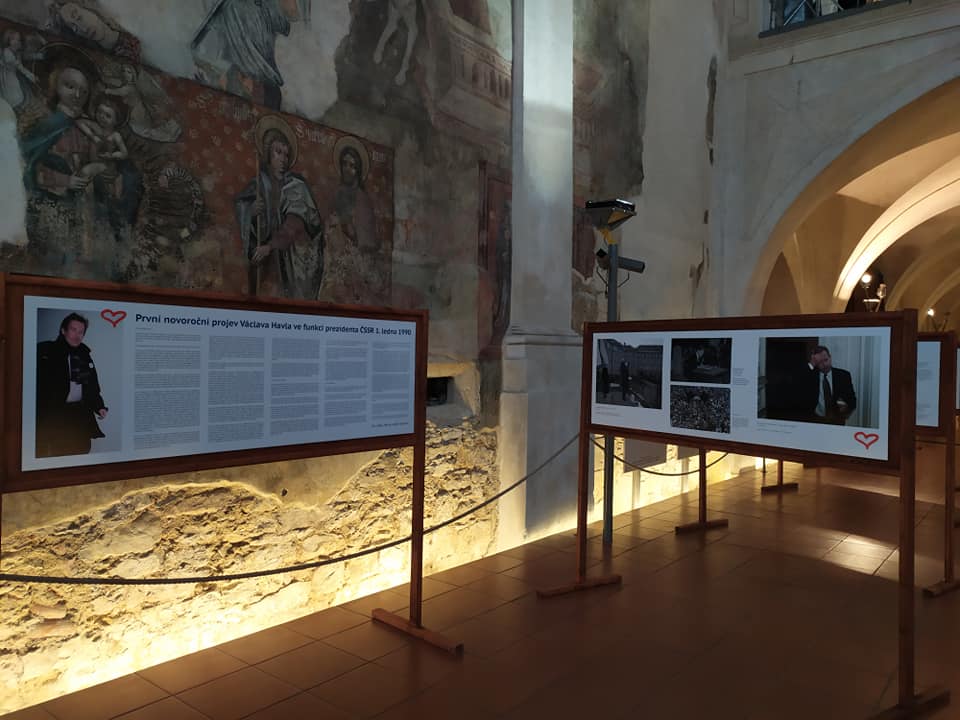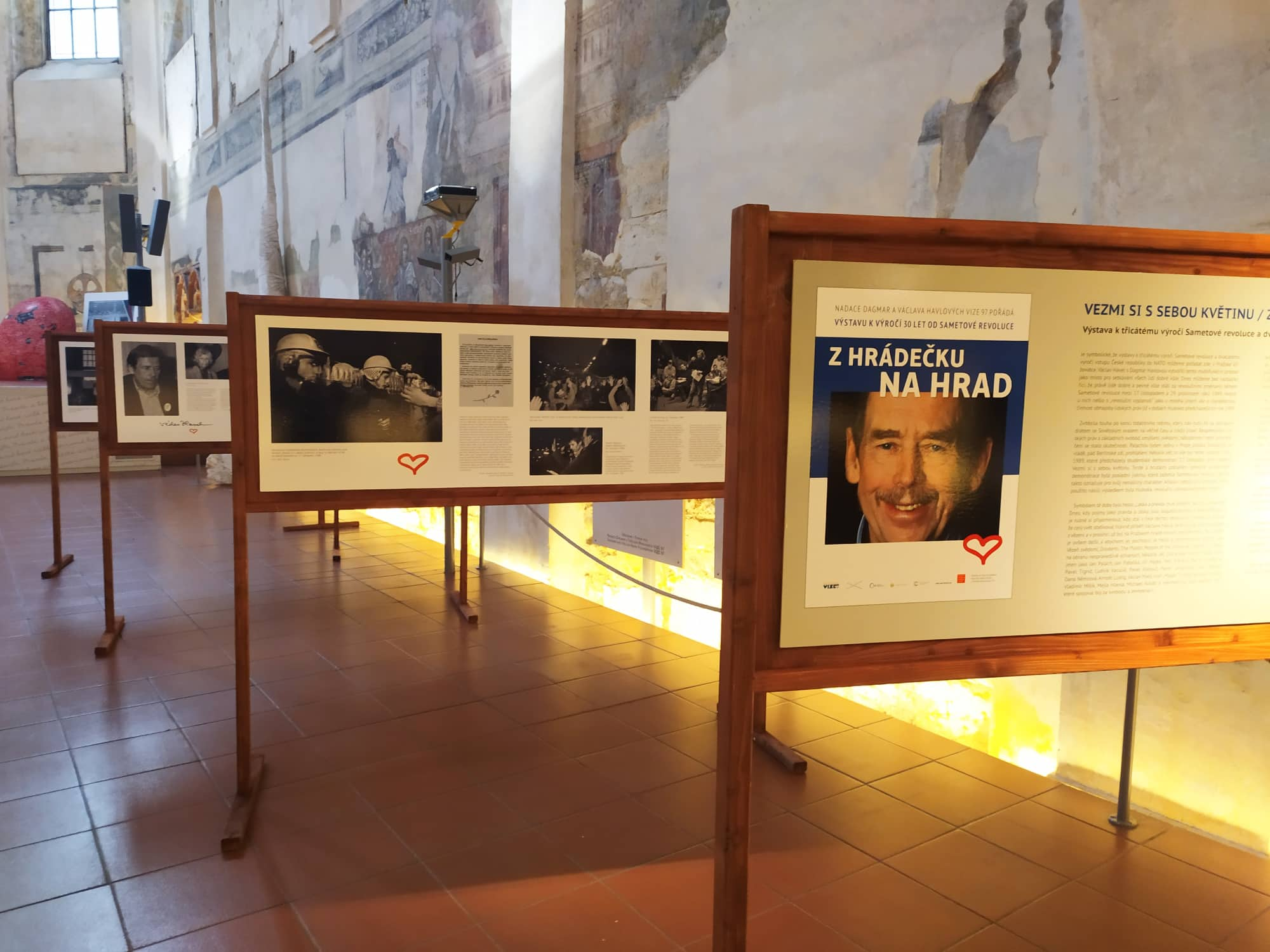A small exhibition of photos of Václav Havel is back on display at Prague Crossroads until February 5. The exhibition is open 10 am to 6 pm, and the admission fee is voluntary. The proceeds from the entry will go to a foundation that supports early diagnosis of intestinal cancer.
The exhibition entitled Z Hrádečku na Hrad (From Hrádeček to the Castle) was made to mark the 30th anniversary of the Velvet Revolution last year. Hrádeček is the town in Northern Bohemia where Havel had a cottage and spent much of his time, and Prague Castle is the seat of the Czech President.
The photographs, assembled by photographer Alan Pajer, were first exhibited in November 2019 but only for 10 days. They are brought back by popular demand.
The exhibition shows Havel from his release from prison in May 1989 and throughout the events leading up to the Velvet Revolution and then into his presidency of Czechoslovakia, which lasted until 1992 as he resigned before the country split. The last photos are from 2003, when his second term as Czech president ended.
The mostly black-and-white photos show Havel meeting with various politicians as the political winds change, and then Havel a balcony above Wenceslas Square during the Velvet Revolution. Photos of the crowdsshow people with the famous “Havel Na Hrad” signs calling for him to be president. At the time, the president was chosen by the Federal Assembly, and not direct vote.

The texts with the photos is in Czech, but a basic knowledge of the history of the Velvet Revolution should be enough to provide sufficient context.
The venue itself is also worth a look, while you are there. Prague Crossroads is now operated by the Dagmar and Václav Havel Foundation VIZE 97, and hosts vents and exhibitions.
Previously, it was the Church of St Anne until religious reforms by Emperor Joseph II at the end of the 1700s converted it into state property. It was used as a printer’s warehouse, among things, after that.
Fragments of Gothic frescoes by Master Theodorik were discovered in 1962 and some original woodwork detail still survives. More frescoes were discovered in 2004, and are believed to be by the Master of the Třeboň Altar. Both sets of fragments are still visible.

The origins of the building go back to 927 AD when the first church on the site was founded by St Wenceslas, the person who is depicted in the statue on Wenceslas Square. It was a rotunda dedicated to St Lawrence.
It was used by Templar Knights from around 1230 to 1312, when the Templars were abolished. After that, it was used by Dominicans until it was deconsecrated by Joseph II.












 Reading time: 2 minutes
Reading time: 2 minutes 

























